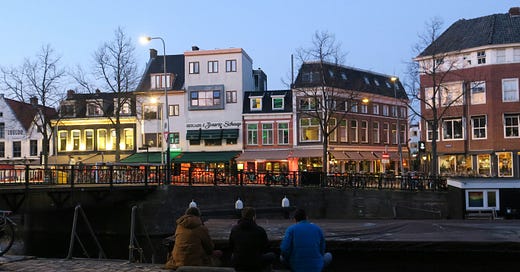House Prices in Groningen Are Rising Faster Than the National Average
Prices rise over 10% nationally—and faster in cities like Groningen—while two-thirds of households can no longer afford an average home. Experts blame supply shortages and restrictive building rules.
House prices across the Netherlands continue to rise at an alarming rate, fueled by limited supply, growing incomes, and falling mortgage rates. The result: owner-occupied homes are becoming increasingly unaffordable, particularly for starters. According to the Dutch central bank (DNB), house prices are expected to rise more than 7% this year, with further increases of 4% in 2026 and 2027.
Average Home Requires a €111,000 Salary
DNB projects the average home price will hit €544,000 next year. A gross annual income of €111,000 would be required to fully finance such a purchase with a mortgage, pricing out two-thirds of Dutch households. This marks a significant decline in affordability: Ten years ago, more than half of households could independently buy an average home. Now, many starters rely on savings or financial gifts from family and friends.
Groningen Outpaces the National Average
In Groningen, the housing market is heating up even faster than the national trend. In the first quarter of 2025, house prices in the city jumped 12.1%, with the wider province not far behind at 11.9%. Het Hogeland saw a staggering 16.6% increase, and Westerwolde wasn’t far behind at 15.8%. These numbers outpace the national average rise of 10.9%, as reported by the Central Bureau of Statistics (CBS).
Prices Climb in Nearly All Municipalities
Nationally, home prices rose in nearly every municipality during the first quarter of 2025. Bunnik topped the list with a 19.8% increase, followed by Waddinxveen (18.7%) and Gouda (18%). Only Texel and Vught experienced slight decreases. Across the country, average home prices now exceed their July 2022 peak, with the average home costing €472,054 as of April 2025.
Major cities also saw significant hikes: Utrecht led with a 14.2% increase, followed by The Hague (10.7%), Rotterdam (8.9%), and Amsterdam (6.4%), where the average price exceeded €632,700.
Report Blames “Nonsensical” Regulations for Shortfall in Housing Supply
A government-commissioned report led by Professor Friso de Zeeuw, released Friday, blames a convoluted mix of over-the-top building regulations for stalling construction and worsening the housing shortage. The report proposes sweeping deregulation, such as relaxing rules on environmental assessments, parking requirements, and archaeological studies.
Among the more controversial suggestions: reconsidering the protection of common birds like magpies and gulls, rethinking costly soil remediation rules for PFAS, and even questioning accessibility regulations that require shallow staircases.
The STOER Commission's findings argue that while individual rules often have merit, their cumulative effect leads to delays and added costs that municipalities and developers can’t afford.
Urgent Political Action Needed Despite Caretaker Government
Although the Dutch government collapsed in early June and is currently operating in a caretaker capacity, De Zeeuw urges politicians to act swiftly on the report’s recommendations. Delaying reform would mean another year of missed construction targets, with the most recent figures showing just 82,000 new homes built last year, well below the 100,000 annual goal.
DNB agrees that simply allowing people to borrow more isn't the answer, as this only fuels price inflation. Instead, the central bank and the STOER Commission both emphasise the need for structural reform: building more homes while cutting the bureaucratic red tape that slows development.
Without intervention, affordability will continue to worsen, and the prospect of home ownership will slip even further from reach for much of the Dutch population.





